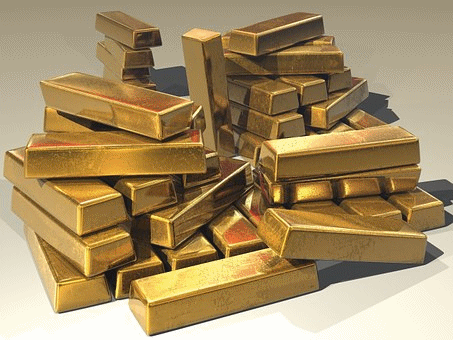
with the symbol Au (from "gold") and an atomic number
of 79. Gold is a dense, soft, shiny, malleable and ductile metal. Pure gold has a bright yellow color and luster traditionally considered attractive, which it maintains without oxidizing in air or water. Chemically, gold is a transition metal
and a group 11 element
. It is one of the least reactive solid chemical elements. The metal therefore occurs often in free elemental (native) form, as nuggets
or grains in rocks, in veins
and in alluvial deposits.
631 Emperor Taizong of Tang, the Emperor of China, sends envoys to the Xueyantuo bearing gold and silk in order to seek the release of enslaved Chinese prisoners captured during the transition from Sui to Tang from the northern frontier; this embassy succeeded in freeing 80,000 Chinese men and women who were then returned to China.
1539 In Florida, Hernando de Soto lands at Tampa Bay with 600 soldiers with the goal of finding gold.
1848 California Gold Rush: James W. Marshall finds gold at Sutter's Mill near Sacramento.
1848 California Gold Rush: In a message before the U.S. Congress, US President James K. Polk confirms that large amounts of gold had been discovered in California.
1849 The U.S. Congress passes the Gold Coinage Act allowing the minting of gold coins.
1864 Helena, Montana is founded after four prospectors discover gold at "Last Chance Gulch".
1869 "Black Friday": Gold prices plummet after Ulysses S. Grant orders the Treasury to sell large quantities of gold after Jay Gould and James Fisk plot to control the market.
1926 Gold is discovered in Johannesburg, South Africa.
1933 The U.S. Congress abrogates the United States' use of the gold standard by enacting a joint resolution (48 Stat. 112) nullifying the right of creditors to demand payment in gold.
1938 Archaeologists discover engraved gold and silver plates from King Darius in Persepolis.

